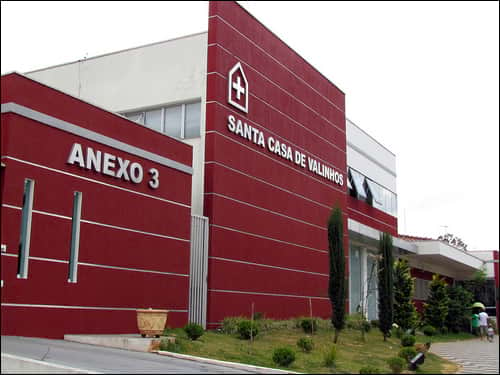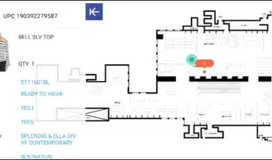Santa Casa de Valinhos maintains 102 active beds and carries out, on average, 450 surgeries, 800 hospitalizations and 10,000 emergency room visits per month. The hospital reports that it has implemented an Internet of Things (IoT) solution to quickly identify and locate the equipment in its intensive care unit.
The system employs Bluetooth Low Energy (BLE) beacons that emit signals to a control center. The initiative is the result of a partnership between Taggen RFID Solutions and Biocam Hospital Equipment.
Edson Manzano, the superintendent of Santa Casa de Valinhos, says the project originated with the need to update inventory, monitor displacements and locate devices. "The real-time tracking system hampers diversions and thefts, makes it easier to locate equipment for patient care, lowers maintenance costs and streamlines asset audits," Manzano says, adding that the current system replaces controls that previously were performed manually. "We were able to optimize our resources better." Among the equipment screened are cardiac monitors, infusion pumps and electrocardiograph machines.

The implementation of the IoT project allows the hospital to meet the current norm of annual inventory counts, as well as the maintenance of Brazil's National Accreditation Organization (ONA) certificate. This certification evaluates the quality of health services, Manzano says, in addition to establishing transparent management with continuous improvements.
With the system, equipment location data is integrated into the Genesis hospital asset-management system for analysis by IBM Watson. "The project involves an RTLS [real-time location system] for real-time location focused on controlling the movement of hospital equipment," says Mario Prado, Taggen's CTO.
"Previously, the process required frequent inventory counts," Prado explains. "Critical equipment to support the life of patients was often delayed. The system currently monitors the location of the equipment in real time." The solution uses beacons manufactured by Taggen RFID Solutions, which constantly transmit their location via Bluetooth signals, following Google's Eddystone beacon standards. "The benefits of this technology are the low cost of deployment and the ability to use a customer's existing IT infrastructure and provide cloud service."
Taggen's localization platform consists of three components. A cloud server provides an administrative interface, dashboards, reports and an application programming interface (API). Small reader modules (known as Taggen Gateways) are installed in the rooms to be monitored. "These modules communicate with the central server via a Wi-Fi network or the client's own wiring," Prado states. Finally, active tags (called Taggen Beacons) are detected by the readers. The system collects location and telemetry information, such as battery level, ambient temperature and so forth.
The solution was integrated with the company's management system, which is the front end preferred by users—the technicians who carry out maintenance at the hospital. Readers are installed in hospital beds, and the system identifies the beacons within 100 meters (328 feet). The cloud server has the intelligence to determine each tag's exact location, even though it is being detected by multiple readers simultaneously.
The Cricket localization system was developed by Biocam, based on Taggen's RTLS platform, which utilizes readers and Taggen RFID tags. Electronic engineering is the result of a partnership with the CPqD institute, located in Campinas.
According to Prado, the project was carried out in two phases. During the first phase, equipment located in the ICU sector and considered more critical was identified with beacons. "Currently," he says, "an expansion is underway and 133 more mobile devices are being identified."
The active tags (beacons) can be reused in the event that a device is replaced. Each tag has a replaceable, long-life battery that reaches a 10-year usage period, according to the manufacturer.
Prado says there were no major challenges for the system's operation. "The main thing was a small adaptation of the hospital's Wi-Fi network coverage," he states. "With the initial deployment success, we want to increase the number of readers to extend the coverage area and the wired network deployment in the equipment."



